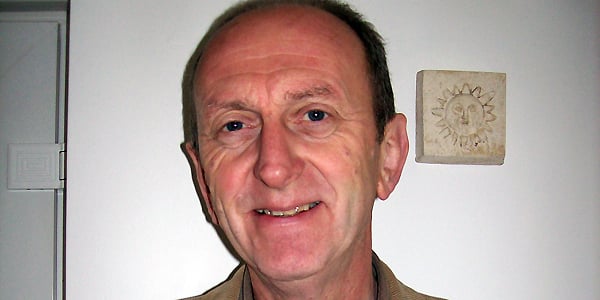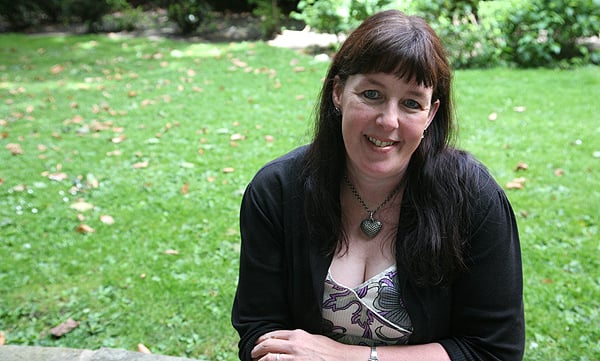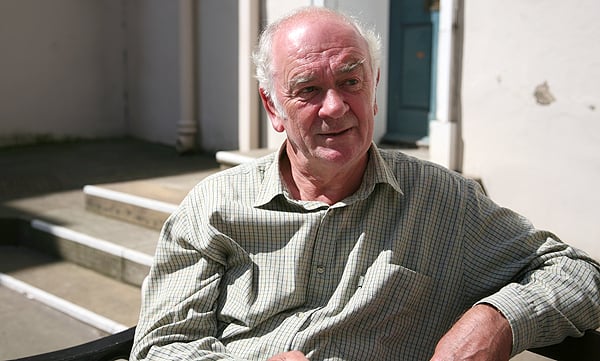Lincolnshire is a county steeped in history, and its literature is no exception.
Lord Alfred Tennyson is perhaps the most famous poet to come from Lincolnshire, with his whimsical ballads about brooks and the wolds — you can find a memorial statue in the cathedral grounds.
But the county’s poetic lineage didn’t stop with the melancholic bard when he died in 1892, and to prove that, here are The Lincolnite‘s top four poets currently working within the county.
Robert Etty

A true Lincolnshire poet, Etty’s family stretches far back into the county’s history. Lincolnshire has provided much inspiration for Etty, who writes about local landscapes, farms, towns, roads and especially people.
Once defined as a “rural poet”, Etty seems to follow the English tradition of country writing in his early work, which shows a finely clipped detailing of nature. However, he acknowledges this may have changed in recent times: “I think now the definition applies less obviously,” he said.
“The rural element is still there to some extent, but there has been a shift in how I treat it. This has occurred in form and language, and in the way rural themes are addressed in a poem. Perhaps now I try less to ‘paint’, and I find poems coming more from ideas and small narratives than from scenes.”
Etty also spoke on his syntactical play: “I’m interested in how sentences work. I enjoy starting and ending them in different ways. I never tire of altering them until they reach the point where I think they can be left. I like following grammatical rules and I like breaking them.”
Etty’s collection Half a Field’s Distance: New and Selected Poems was published by Shoestring Press in 2006, and is still available to purchase.
Joel Stickley

If you fancy your poetry off the page, then Lincolnshire Poet Laureate Joel Stickley is definitely one to watch. Categorising himself as a performance poet, Stickley’s work is a unique blend of poetry, stand up and storytelling, all served with an absurdness that covers everything from snail racing to a love poem dedicated to the A47.
Inspired by performance poets such as John Cooper Clarke and Murray Lachlan Young, Stickley describes his craft existing in “a strange twilight zone between proper poetry and comedy.” Whether his poetry is “proper” or not, it is undeniably rich with humor, idea and invention, with an intuitive use of rhyme heightened by Stickley’s own warm charisma.
Originally from Nottinghamshire, Stickley was offered the Laureateship in April, and ever since has been writing about people and places within Lincolnshire.
“Part of being laureate is to go out, visit places, meet people, discover hidden parts of the county and write about them,” Stickley said. “Lincolnshire is such a big county, there is so much to see and do.”
If you want to see Stickley, he is currently gigging throughout the county. Alternatively, you catch up with him on his blog.
Kathryn Daszkiewicz

“Sardonic”, “unsentimental” and “unsettling” are just a few words that have been used to describe our next poet’s work. Brought up in the North East of England, Daszkiewicz sets her poems in a variety of locations from the Lincolnshire Fens to Mount Everest, covering such topics as love, death and mental illness.
“I write about all sorts of things,” Daszkiewicz said, “but they have to really mean something to me, I have to engage with the subject. I’m not great at workshops and being told to write something if it doesn’t resonate with my experience.”
Despite her large range of settings and subjects, a quick flick through her collection In The Dangerous Cloakroom proves how deft her skills are in economy and compression. Each poem is short, keenly observed and razor-sharp, in both imagery and wit.
“I think naturally what I write is very sparse, but usually there is a lot of double meaning and puns and ambiguous things.” Daszkiewicz said.
“Sometimes I have an idea and can imagine it going on forever, so I have to axe and axe to chip it down.”
In The Dangerous Cloakroom was published in 2006 by Shoestring Press. Daszkiewicz is currently working on her next collection, the publication date unspecified.
David Lightfoot

Originally from North Wales, David Lightfoot is a poet, novelist, founder of poetry magazine Seam, and has appeared in anthologies alongside such big names as Simon Armitage Wendy Pope and Carol Anne Duffy.
Once described as the “master of form and technique”, Lightfoot is especially concerned with how a poem sounds out loud, and pays special attention to such aspects as rhyme and rhythm.
“I believe firmly poetry is meant to be read aloud,” he said. “It gains immensely, if it has good sound, in how it can be interpreted.
“I like the sonnet as a form — I like its discipline. What you have to watch is that it doesn’t become rhyme led. If you end up just thinking of something to say to get it to rhyme, you’ll end up saying something you’d never have said.”
Lightfoot also talked about his latest publication, Intermittent Faults, which is a series of tiny poems written as part of a poem-a-day experiment: “Lately I’ve been pretty dormant. When I haven’t got anything to say I don’t say it, until this period when I made myself do something everyday. It’s been almost painful.” he explained.
“When we were out at Rothwell, I kept this journal, and everyday I’d jot down an odd poem. They are completely untypical of me.”
Intermittent Faults was published by Sunk Island Press, and is available online.




